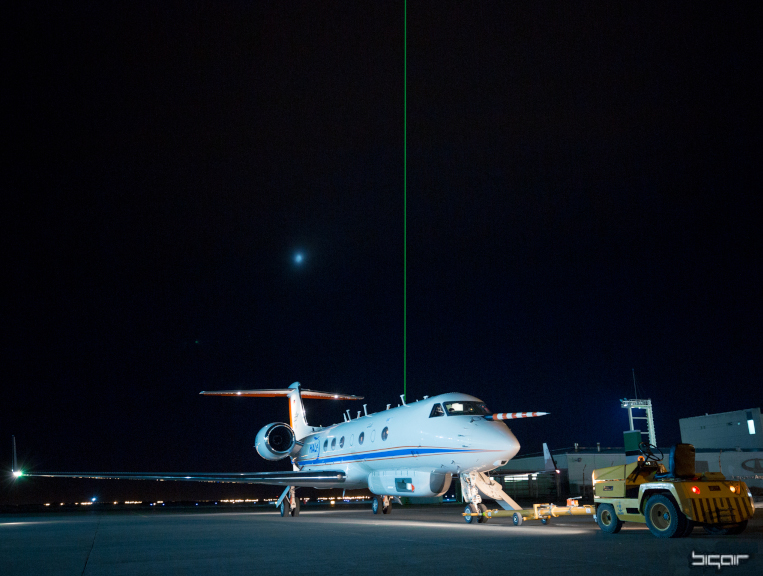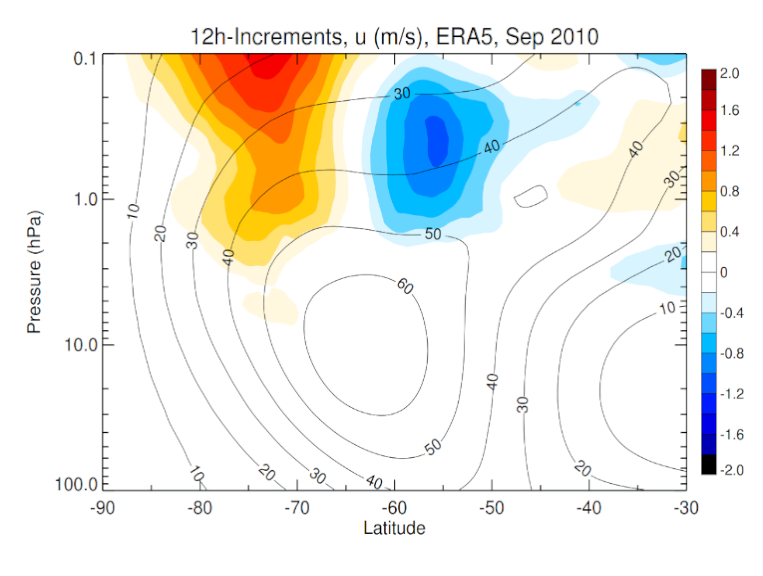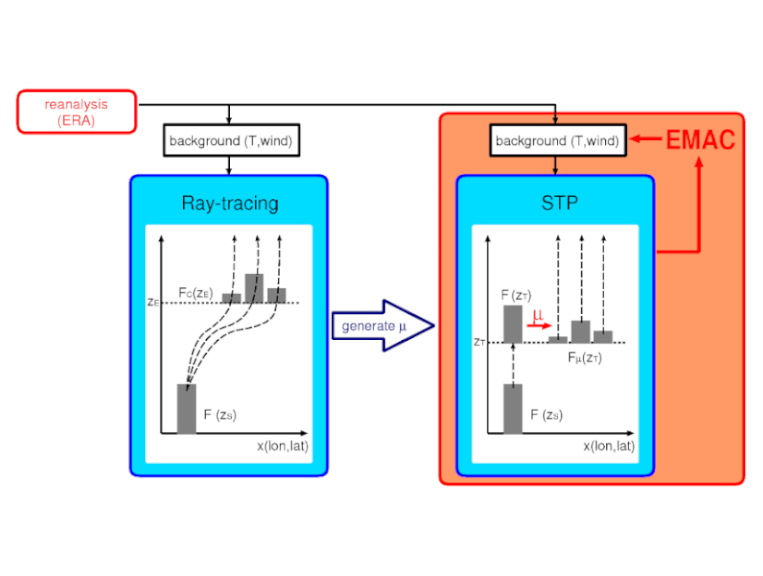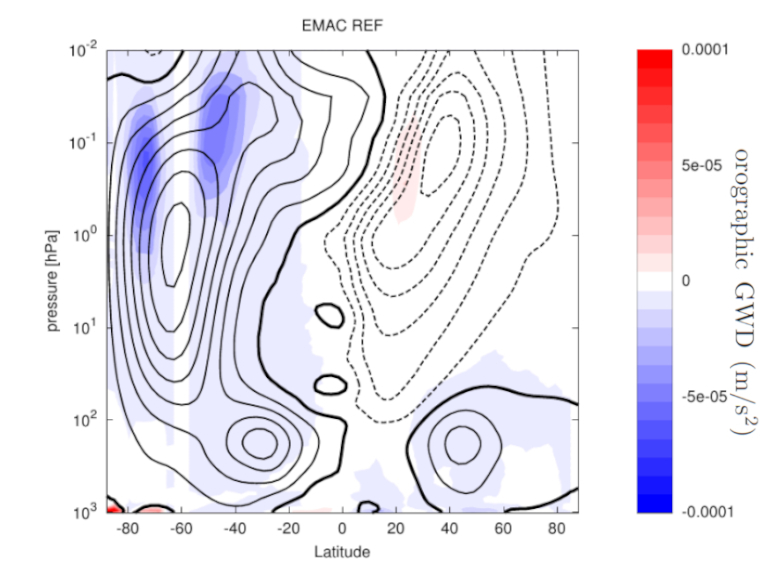

The project tasks are grouped into five scientific work packages and one workpackage coordinating their entity.
WP0: Project Coordination (DLR)
WP1: Observations (DLR, FZJ, KIT, IAP)
WP2: Mesoscale modelling (DLR)
WP3: Reanalyses (LMU)
WP4: Parametrization (FZJ)
WP5: Climate modelling (DLR)

In this work package, ground-based and airborne observations are organized and conducted in the region of the Southern Andes, the Drake Passage, and the Antarctic Peninsula. The aim is the detailed probing and quantification of GW activity and GWMFs in the troposphere and middle atmosphere. Ground-based remote sensing and radiosonde observations at the southern tip of South America focus on OGWs and their temporal development. Mesospheric wind measurements are relevant to quantify tidal motions and Doppler shifting of ground-based GW measurements. Remote-sensing and in-situ measurements onboard HALO extend the observational volume allowing the investigation of NOGW sources and the horizontal propagation of OGWs and NOGWs, i.e., the spatial structure and extent of the GW field. The airborne measurements took place in the framework of the SouthTRAC campaign in September to November 2019. Key instruments on HALO were the upward looking Rayleigh lidar ALIMA covering the middle atmosphere/lower thermosphere, and the infrared limb imager GLORIA covering the upper troposphere and lower stratosphere region. This unique combination of two cutting edge instruments offers new insights in the complex GW structures in the atmosphere.
In this work package, numerical simulations of orographic and non-orographic GW events are performed using the global ICON model of DWD (Zängl et al. 2015). Locally enhanced model resolution of around 1 km can be realized by nesting directly in ICON and allows ICON to resolve the GW spectrum to a large part. Temporal evolution and spatial distribution of GWMF can be computed from ICON simulations and justified against the observations and their analysis. This is done for the global ICON data which rely on orographic and non-orographic GW parameterizations, and for the highly resolved nested data providing reliable 4D (time and space) GW information. In this manner, the ICON data will help to establish a connection of the tasks and results in the simplified model world (WP3, WP4 and WP5) to real world observations (WP1).

The general goal of this work package is to provide a bridge between the detailed GW analyses from the field campaign and the general representation of GWs in climate models (WP5). Such a bridge is necessary to transform the knowledge gained by the case study as part of the field campaign to a statistical characterisation needed to improve the GW parameterisation in climate models. To do so, we will quantitatively assess GWMF and the associated forcing of the mean flow in the SH polar stratosphere based on several ECMWF reanalysis products, as well as operational analyses. Missing and/or misrepresented drag will be inferred both directly from analysis increments due to data assimilation, as well as indirectly from the residual of the momentum budget. The results are expected to both put the field observations into the perspective of the past record, as well as provide a baseline for the improved GW parameterisation in EMAC based on observationally-constrained global model runs.

In this work package, we seek an efficient way to represent horizontal GW propagation in a GCM and thus reproducing the high GWMF in the SH PNJ by more realistic processes than in previous studies. The GWMF contained in the PNJ is given by the strength of the source, the horizontal and vertical propagation path and whether it reaches the PNJ, and the dissipation and filtering which the GWs experiences. In a conventional parametrization implemented in a GCM, parametrized GWs propagate only vertically. Ray-tracing handles horizontal propagation. However, in order to significantly reduce the high computational cost that comes along with climate simulations, we follow a different approach. Our approach is to perform ray-tracing offline, evaluate the results statistically and compile look-up tables. For each orographic source, these will provide a probability distribution µ that expresses statistically to which locations at an evaluation height GWs propagate. In other words, we will spread GWs from a given source to all locations in the lower stratosphere where µ is positive.

In this work package, the aim is to improve the representation of GWs in global models using observationally based results from the other work packages. GWMF and drag from observations, high-resolution modelling, and reanalyses will serve as basis for the evaluation of GW activity in the global model. While high-resolution model data can be compared to nudged EMAC simulations for the specific episode of the campaign, the statistically mean representation of GWs in the model can only be evaluated with long-term data of GW forcing as will be provided from reanalysis data. The simplified horizontal propagation parameterization developed in WP4 will be implemented in EMAC. The impact of GW modifications on the simulation of the climatological mean circulation of the stratosphere, the response of stratospheric circulation to anthropogenic forcing, and finally, the dynamical downward coupling of stratospheric circulation change to the tropospheric climate will be studied. In particular, we will focus on the problem of the current "gap" in GWD around 60° S by means of 1) comparison to observational data to identify the nature of the "gap" in more detail, and 2) dedicated sensitivity studies with respect to modifications of the GW parametrizations. We aim to evaluate the hypothesis that the missing GWD at 60° S in the stratosphere is due to neglecting horizontal propagation of OGWs. As alternative hypothesis, we test whether additional sources of GWs (orographic or non-orographic) around 60° S are needed to explain the missing GWD at 60° S. Thereby, we will investigate whether similar effects on the mean stratospheric circulation are obtained by altering GW propagation (re-distribution of GWD with same sources) or sources.